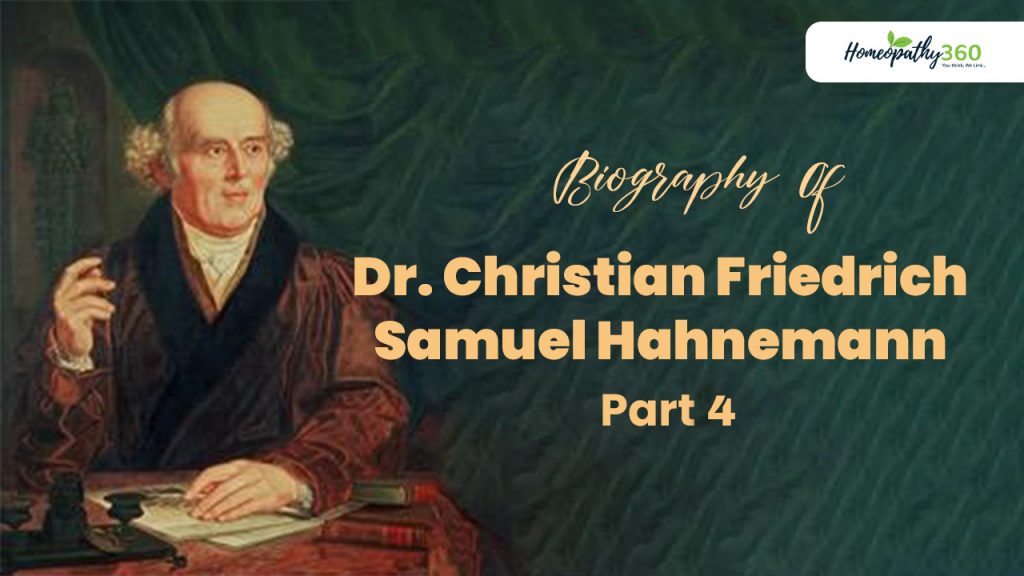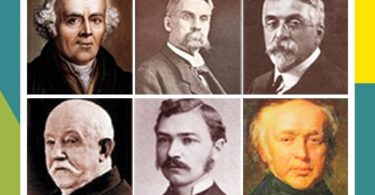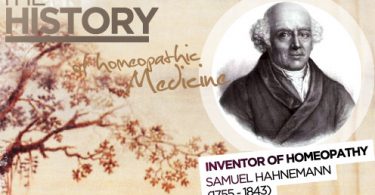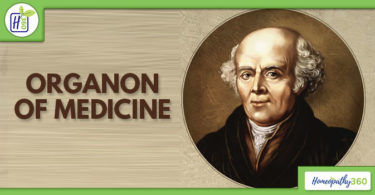
Leipsic (1811)
It was here, the centre of medical knowledge that he wished to declare publicly what he had discovered.
1811- He attempted to set up an Institute of the Post Graduate study of Homoeopathy
↓
No student
↓
Then he applied to the Dean of Faculty of Medicine at the Leipsic University to
enquire whether he could give medical lectures at the University
↓
On 10 Feb 1812, the Dean replied that an external doctor, although qualified to practice was not allowed to deliver lectures until he had defended his own dissertation from the upper chain and then had to deposit 50 thalers (about 20 pounds) with the faculty.
↓
Hahnemann took up the challenge
On 26 June, 1812, Hahnemann delivered the required speech of qualification-
‘Dissertatio historico- medica de Helleborismo veterum’ (Dissertation in Latin)
(Historic- medicinal essay on treatment and cure with Hellebore of the ancients)
In this speech, Hahnemann spoke about the historical-medical aspects of treatment and cure with white Hellebore. He showed the initial use of Helleborus albus as a medicine and proved that it is the Veratrum album→ the speech impressed the audience. Even the dean Professor Ludwig commented favourably
↓
On September 1812, Hahnemann opened his course of lectures at the commencement of new academic year- two lectures per week on Wednesday and Saturday, from 2-3pm
↓
1813-Outbreak of Typhus in the city due to polluted drinking water
Hahnemann treated 180 patients. Used Rhustox and Bryonia. Only 2 died- this was the First public demonstration of efficacy of homoeopathy.
1814- published his experience under the title, ‘Treatment of typhus fever at present prevailing’. Record of 180 patients treated. Only 2 died and gave an account of his success with two homoeopathic medicines.
↓
Hahnemann resumed lectures in University- initially room was full with students, doctors and medical men. After, reading a paragraph from his Organon, which he was about to discuss, his professional calm and dignity would disappear and he would break out with negative, uncontrolled and abusive attacks on contemporary medicine and those who practised it. Dr. Franz Hartmann, one of his most faithful students and followers wrote about Hahnemann’s such behaviour. This resulted in lessening of the audience, people mocking at him. These insulting attacks repelled other doctors and also embarrassed the faithful followers.
As Hahnemann continued his lectures, he gathered around himself, a small but enthusiastic and talented group of supporters. He soon created a group of collaborators for the provings of drugs, like Franz, Hartmann, Gross, Hornburg, etc. Provings were carried out according to an exact system and from detailed instructions.
From 1811-1821- Materia Medica Pura– published in 6 parts)
1816- The Treatment of Burns
1816- Venereal disease & its ordinary improper treatment
1820- The preparation and dispensing of medicines by homoeopathic physicians themselves
1816- violent newspaper feud with a Dr. Dzondi over the methods of curing burns. Dr. Dzondi said, ‘For speedy, sure painless cure of every type of burn, cold water should only be applied.’ Hahnemann opposed this, citing several examples of similia similibus in curing burns and other conditions. He advocated use of heated spirits of wine or turpentine oil for burns → dispute went for two years (until November 1818) → no definite result
1818- death of 3rd child, 2nd daughter Wilhelmina at the age of 30 years
1819- Dr. J. K. Bischiff, Professor of medical clinic and head physician of Prague general infirmary, published a work- Views on the methods of healing up to this time and on the first principles of the homoeopathic theory of disease. Here he acknowledges Hahnemann’s earlier contributions to medicine; approved his provings of medicine and the method of preparation but rejected Hahnemann’s homoeopathic principles. He opposed Hahnemann in his criticism of bloodletting.
1819- Professor Pucheh criticised Hahnemann in an essay published in Hufeland’s Journal for his contempt for rest of medicine. He said that homoeopathy might have been acceptable had Hahnemann not declared open war on the whole of rest of medicine. For the first time in his life, Hahnemann remained silent to these criticisms.
16 December 1819- Leipsic apothecaries lodged a complaint to the Council of the Town of Leipsic. Hahnemann was accused of infringing their rights by preparing and dispensing his own medicines.
9 February 1820- Hahnemann was brought before court. He conducted his own defence. He asked for permission of handing in a written deposition to precede the final judgement.
- In this he stated that his new system of treatment was quite different and required only simple medicine which needed no compounding.
- Infinitesimally small dose would not earn them anything since these apothecaries charged according to the weight of the ingredients in a prescription.
On 15 March 1820- Judgement was passed against Hahnemann by the court, forbidding him to prepare or dispense his medicines himself, on a penalty of 20 thalers. But the matter did not end here. The judgement had to be confirmed by the government.
Meanwhile, Prince Schwarzenberg, General Officer commanding the
allied armies against Napoleon, who had appeared in Leipsic as conqueror in 1813 (October), came from his Austrian home as a patient to Hahnemann.
13 January 1817- Prince had a stroke, followed by paralysis of right side and insomnia. He was treated by royal physician Dr. Von Sax & Army physician Dr. Marenzeller, but No relief. Then Dr. Marenzeller advised him to seek help from the celebrated Dr. Hahnemann. Hahnemann accepted the request to treat the Prince, but demanded that the patient should come to Leipsic, as Hahnemann could not travel to Austria owing to his age and he could not leave his practice or research for a long time.
- In April 1820, Prince arrived in Leipsic with his two doctors
- Hahnemann started treatment and patient improved extraordinarily with homoeopathy initially. But subsequently he fell back in his old habits of abundant drinking which did not agree at all with homoeopathic treatment. Condition worsened with this mode of life.
- Dr. Von Sax continued allopathy– interfered with Hahnemann’s homoeopathic treatment. Once Hahnemann, on a visit to the patient with Dr. Marenzeller, met 3 allopathic doctors, who were carrying out venesection on the patient. Hahnemann never visited the patient again.
- Five weeks later, Prince died from another stroke on 15 October 1820.
Death of Prince Schwarzenberg sparked off extensive criticisms of homoeopathy. Under pressure from apothecaries, the government brought forward their decision on the findings of the high court on 30 November in the matter of dispensing medicines-
Hahnemann would be allowed to dispense his own medicines only:-
- When in the country, where their procuration might be made difficult by the distance from nearest town.
- In serious cases when imminent danger does not permit the medicine prescribed to be obtained from apothecaries.
- In outlying districts where there are no apothecaries
- In providing medicine to the poor, when cost may not be taken from the poor box or source.
This restricted Hahnemann’s homoeopathic practice to a point where it was impossible for him to continue. Some time passed and Leipsic apothecaries again made a new complaint to authorities expressing their fear that Hahnemann would abuse these privileges. On February 21, 1821, their representation was rejected. However, they were asked to report individual cases of misuse occurring from this cause.
Hahnemann was again attacked by 13 Leipsic doctors (including Professor Calrus). Hahnemann had written an article few months earlier declaring that eruptive fever prevailing in city at that time was not scarlet fever for which Belladonna was required, it was Purpura miliaris (purple fever- for which Hahnemann had recommended another medicine in Organon- Aconite). The 13 doctors criticised this article also stating that Belladonna was not discovered by Hahnemann, it was known before his time. Dr. Moritz Muller published a letter on 6 February supporting Hahnemann and confirming the efficacy of Aconite. Hahnemann wrote a few days later- replied these 13 doctors & went on to prove that Belladonna as a cure for scarlet fever and Aconite as a treatment for purple fever were his own discoveries.
Finally attempts were being made by apothecaries and several doctors to drive Hahnemann out of Leipsic by force.
To this, Dr. Volkmann (Town Clerk of Leipsic) entered a protest at the treatment of Hahnemann at the appeal court of Dresden. The appeal was also signed by a Dr. Lindnor and 40 Leipsic residents. The appeal court ruled that Hahnemann would be allowed to remain in Leipsic.
But Hahnemann had already decided to leave Leipsic and its hostile environment. Hahnemann now closed his practice, resigned from his position at the University and left Leipsic in June 1821.
To be continued…
READ MORE –
https://www.bjainbooks.com/product-detail/samuel-hahnemann-his-life-times-by-treveor-cook
https://www.bjainbooks.com/product-detail/samuel-hahnemann-his-life-and-memory
Read More: Biography Of Dr. Christian Friedrich Samuel Hahnemann Part 3





